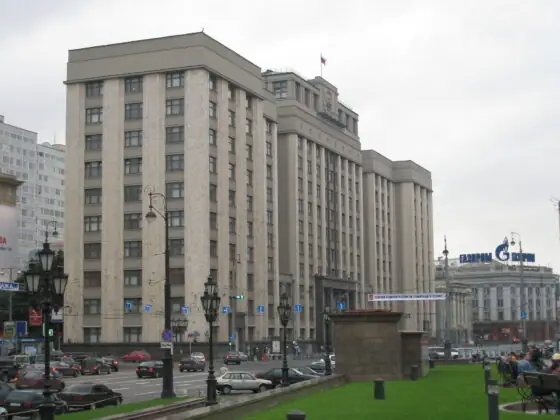A reaction to Jesse Driscoll’s PONARS Eurasia Policy Memo: “Ukraine’s Civil War: Would Accepting This Terminology Help Resolve the Conflict?” by Ivan Gomza.
Since late 2013, Ukraine’s contentious political environment has received many labels: riot, revolution, coup, invasion, civil war. Unfortunately, the use of a particular label often hinges on the user’s political sympathies and affiliations, which does not encourage balanced discussions. Recently, Jesse Driscoll entered the fray with his policy memo arguing that the Ukraine crisis could/should be described as a “civil war.” He has two overarching arguments: 1) that events in Ukraine fit the scholarly definition of “civil war,” and 2) should this description be consistently applied by actors in academia and in policymaking, it will contribute to conflict resolution. Both claims are dubious. I argue that “transnationalized insurgency” is a much more appropriate way to describe the situation in Ukraine’s Donbas. I also explain why changing terminology will probably not influence conflict resolution.
A “Civil War”? Too Plastic a Notion
Key components of Driscoll’s argument are actually irrelevant for whether the conflict should be termed a civil war. One of the most prominent concerns is the transnational dimension of the conflict. For instance, it neither proves nor disproves that there is a civil war when he mentions Russia’s “signal that interstate borders were no longer sacrosanct.” Transnationalization occurs during terrorist activities, rebellions, revolutions, civil wars, and other types of contentious politics. Therefore, the main issue with Driscoll’s “civil war” thesis is that he fails to provide clear-cut characteristics of civil war. Rather, he refers to common features of contentious events and/or lack of state capacity.
Furthermore, there are issues with what Driscoll presents as the “facts of the case.” First, Driscoll’s wording seems to imply that the new Ukrainian army emerged from militia, which was not the case. A standing army was crucial throughout the conflict. This difference is important, since it distinguishes what happened in Ukraine from the emergence of, say, the Kosovo Liberation Army or other irregulars-to-army transformations. Driven by élan patriotique, Ukrainian volunteers did provide support and gave impetus to efforts to quench separatist activities, but they were not the backbone of the armed forces. It is revealing that the heaviest loss of Ukrainian personnel (before the fighting in Debaltsevo) was the Il-76 shootdown over Luhansk when only professional army servicemen were lost.
Although Driscoll indicates that the issue of timing in Minsk II is not specified in the agreement, he seems to be asserting, based on his own logic, that elections should come before fighting is curtailed. He writes, “If the convention of calling Ukraine a civil war was adopted, an ‘elections first, military drawdown later’ sequencing of the Minsk Accords could emerge as a pragmatic resolution path…” However, the official text starts with a cease-fire, then asks for heavy weapons withdrawal followed by ensuring effective verification of the ceasefire, local elections, and the reinstatement of full control of the state border by Ukraine. The exact wording of that section on elections is, “Launch a dialogue, on day 1 of the withdrawal, on modalities of local elections…” Therefore, a more correct interpretation would be “security first, election later.” Moreover, it is not specified in the accords whether the additional withdrawals (“of all foreign armed formations, military equipment, as well as mercenaries from the territory of Ukraine”) should precede or succeed elections.
The problem is not only with the way Driscoll argues his case, but with the concept of “civil war” itself. In contemporary academic parlance, a civil war is a rather broad phenomenon that can encompass a heterogeneous collection of events. The Tajikistan Civil War and the Mozambican Civil War share the label with the First Sudanese Civil War and the Myanmar Civil War. With the addition of historical cases like the Russian Civil War and Greek Civil War, the set of cases is immense. This, however, diminishes the value of the “civil war” notion as an analytical tool, for any scholarly concept that lacks precision and is not restrictive enough to exclude very different phenomena is bound to spawn inappropriate comparisons and yield uncertain results.
Unfortunately, lack of precision is exactly what characterizes the notion. In a seminal book by Yale University’s Stathis Kalyvas, civil war is defined as “armed combat within the boundaries of a recognized sovereign entity between parties subject to a common authority at the outset of hostilities.” This classification is prone to include a whole range of contentious politics from armed street clashes with the police to pogroms to sectarian fights. Since it is hardly acceptable to code, for example, the “Hep-Hep” pogroms against Ashkenazi Jews in the Kingdom of Bavaria (1819) as civil war, this definition, being too permissive, is non-operational.
More precise conceptualizations of civil war specify either sides of the violent interaction or a minimal number of casualties. The Correlates of War (COW) project/dataset, for instance, stipulates that civil war happens “when the government is involved as an entity in the conflict, [and] it must either commit 1000 troops to the war or suffer 100 battle-related deaths.” Driscoll himself applies the numerical criterion while citing “about 10,000 deaths resulting from the conflict” in Donbas as a proof of an ongoing civil war. The problem with the numerical threshold is that it is a mere academic convention at best or an arbitrary number at worst. Driscoll seems to suggest that 10,000 casualties is enough to categorize any intrastate conflict as civil war. There is yet another issue with numbers, as raised by Yale University’s Nicholas Sambanis: a threshold for coding civil wars might be reached through cumulative effect. Thus, a protracted conflict with 500 deaths per year will appear as a civil war in 20 years. It is revealing that the very Uppsala Conflict Data Program used by Driscoll counted 6,371 casualties in Ukraine between 2013 and 2017 (it includes the 88 murdered in Kyiv in 2014 by sharp-shooters). In other words, it would not be regarded as a civil war during this period if one’s threshold is 10,000 deaths, but it might be afterwards. This kind of logic is clearly unsatisfactory from a scholarly point of view. This is the problem with Driscoll’s argumentation: he does not actually provide any functionable definition of civil war, just mere suggestions and unspecified features.
It Is Not a “Civil War ” but a “Transnationalized Insurgency”
I argue that current efforts to conceptualize civil war tend to apply non-exclusive criteria, which results in conflating several different types of contentious politics under the same label. As a result, two distinct process—civil war and insurgency—become indistinguishable. This confusion seems to be an implicit research program. For instance, PRIO’s Dynamics of State Failure and Violence project eschews “drawing a clear distinction between war and peace and between insurgency, civil war and inter-state war [focusing] on modalities of collective violence.” Similarly, the Our World in Data project’s definition of civil war lumps together “(a) conflict to control the central government and (b) disputes over local issues.” Even Sambanis’ nine lucid principles to code civil wars contain one that can cause confusion: “the parties are politically and militarily organized, and they have publicly stated political objectives.”
In general, parties in both civil wars and insurgencies have their own political objectives, but these often differ significantly. In case of civil war, several factions compete to impose their own exclusive rule over a given polity. Insurgency is a form of violent contentious politics when one party strives to carve its own domain from a political entity. This distinction suggests that the Chinese Civil War, when communists and nationalists fought for control, is correctly termed, whereas the First Sudanese Civil War, when Christians from southern Sudan sought regional autonomy from Muslim northerners, was an insurgency.
The civil war vs. insurgency distinction is not a sterile terminological game. It helps to grasp the divergent trajectories and different dynamics of contentious events. Insurgency is territorially contained; its instigators mobilize resources locally; the clashes and casualties occur predominantly in a given region; and the contention has some impact over but does not determine all political processes. During civil wars, competing factions have their own strongholds, but they mobilize resources cross-nationally; violence holds sway in society both horizontally and vertically, thus producing much more anxiety and casualties; and the events of the contention are the single most important factor of politics and policies.
Sure enough, both civil war and insurgency breed sorrow and devastation, but only the former (as the Russian Civil War or the Mozambican Civil War cases suggest) tends to leave the whole country in ruins and often only one party victorious. Insurgency, although frequently dragging on for years or decades, is prone to produce mutually accepted settlements or a final separation.
It is arguable that for classification purposes, scholars do not even have to pay much attention to goals declared by contentious actors. If a state manages to contain the violent contention within a given territory, if it effectively hinders insurgent efforts to mobilize resources outside their local reservoirs, if it blocks most plans to bring turmoil to other parts of the polity, we have an insurgency on our hands. Thus, although Alexander Zakharchenko (former prime minister of the Donetsk People’s Republic) bragged that “our tanks will reach the Dnipro river,” and the initial plan was to spread turmoil over other Ukrainian regions outside the Donbas, the intention to launch a civil war in Ukraine failed. It is worth mentioning that there are no watertight barriers between various types of violent contention. Terrorists can practice insurgency when they have a territorial foothold. Insurgencies might evolve into civil wars if the rebels manage to tear down the social fabric. Civil wars can breed warlordism if any competing faction fails to establish unifying rule. What differentiates modalities of collective violence is the amount of available resources wielded by and the effectiveness of counter-actions undertaken by the state apparatus.
Anyone, who has personally visited the bustling business in the city of Dnipro or crowded cafes in Kharkiv, who has witnessed the decentralization and education reforms, who has observed the deepening trade contacts with the EU, the construction of new plants, and the host of other current policies, can clearly see that it is insurgency—not civil war—that best fits the Ukrainian case.
The Centrality of Russia’s “Transnational” Role
Neither civil war, nor insurgency is incompatible with transnationalization. In fact, both give motivations to and are amplified by participation of other states or non-state actors. Historical cases of civil wars or insurgencies coming together with invasions, interventions, cross-border assistance, trafficking, and provision of safe havens are abundant (e.g., Kashmir, Kurdistan, Tajikistan, Yemen). The idea of “either civil war/insurgency or invasion” is thus spurious. The former does not preclude the latter. Furthermore, neighboring powers rarely shy away from fomenting or supporting insurgency in order to gain additional leverage. The domestic sources of the Donbas insurgency notwithstanding (see the 2014 policy memo by Baylor University’s Sergiy Kudelia on this topic), it is erroneous to ignore the role of Russian aggression against Ukraine.
Although public opinion about identities and allegiances during an insurgency is highly unreliable because these hinge on territorial control, recent polls reveal (see Figure 13 in this 2017 ZOIS report) that most people both in the so-called Donetsk People’s Republic and Luhansk People’s Republic, on the one hand, and in the Donbas that is under Ukrainian control, on the other, still want the region to remain part of Ukraine. This preference, however, tends to wane: the longer people live under these regimes, the higher is their regional and “new republican” identity. This, again, is consistent with the territorial control thesis. Since Russian support to insurgency is established and no longer contested, it is logical to conclude that Russia has an interest in amplifying the regional (Donetsk and Luhansk) identity and furthering identity divisions to keep the insurgency active.
The transnational character of the Donbas insurgency is not a secondary issue but a fundamental matter. Combining the occupation of Crimea, increasing tensions in the Sea of Azov, economic pressures and counter-pressures (such as those in the natural gas sector), appeals to international courts, and attempts to gain the moral upper hand in the eyes of the world, one can clearly see two sovereign states engaged in a conflict. The Donbas insurgency is only one dimension among many others of a broader Russo-Ukrainian conflict, which could be most appropriately categorized as a transnationalized insurgency.
Will Changing Terminology Help Solve the Conflict?
Taking into account all the real-world factors impacting the conflict, the suggestion that changing terminology—from calling it the “Ukraine crisis” or “Russia-Ukraine crisis” to “civil war”—is necessary for meaningful conflict-resolution would seem to lack both logical grounding and empirical support. No change of language will help to:
• halt the influx of materiel and personnel from Russia;
• prevent further tensions around the Sea of Azov;
• facilitate free and fair elections (unobstructed by Russian pressures and selective incentives due to its military control over the Donbas); or
• reinvigorate the efforts and effectiveness of the OSCE.
Driscoll fails to specify the causal mechanisms allegedly linking the change of labels and the change of policies. This is likely because they are nonexistent. Russia is unlikely to end its blockading of the Ukrainian ports in the Azov Sea just because scholars start using the label “civil war” to describe the conflict. The Russian side is intent on something more essential than a mere terminological innovation. Likewise, the OSCE will not monitor the infringement of the Minsk accords just because they assume that there is “a civil war” to deal with. Rather, for them, more resources and clearer procedures would be helpful.
Driscoll’s suggested conceptual alteration might promote a resolution in one unique way, however. Since the end of 2013, the Russian Federation has consistently pushed the idea that Ukraine is a quasi-state, a failed state, and a “404 state” (an “error”). These allegations would be much more easily accepted when a first milestone alongside the road to state failure is recognized: a civil war. To brand the Ukraine crisis as a civil war is to open a discursive opportunity for further doubts as to whether Ukraine can exist as a political entity. Such doubts might also contribute to a compartmentalization of the occupation of Crimea and the Donbas insurgency as two separate cases. It might shatter international support for Ukraine. It might legitimize the idea that a deficient Bosnian solution is the best Ukraine should opt for.
Conclusion
The language of “civil war” is both inaccurate from a scholarly point of view and fruitless as a policy proposal for resolving the Ukraine crisis. It is not taboo to describe the events in Ukraine using this label, but consistent consideration attests that the most appropriate way to describe the conflict—specifically the current situation in the Donbas—is as a transnationalized insurgency. This does not disqualify the existence of local concerns and grievances that are partially responsible for the crisis. In addition, the notion correctly emphasizes the contained nature of the violence. Adopting the language of “civil war” as a tool that could abate the Ukraine crisis would conceal the real reasons, and exclude the best mediation solutions, for the indirect interstate conflict that is at hand.
Ivan Gomza is Associate Professor in the Department of Political Science, and Senior Fellow at the School for Policy Analysis, at the National University of Kyiv-Mohyla Academy.
[PDF]











